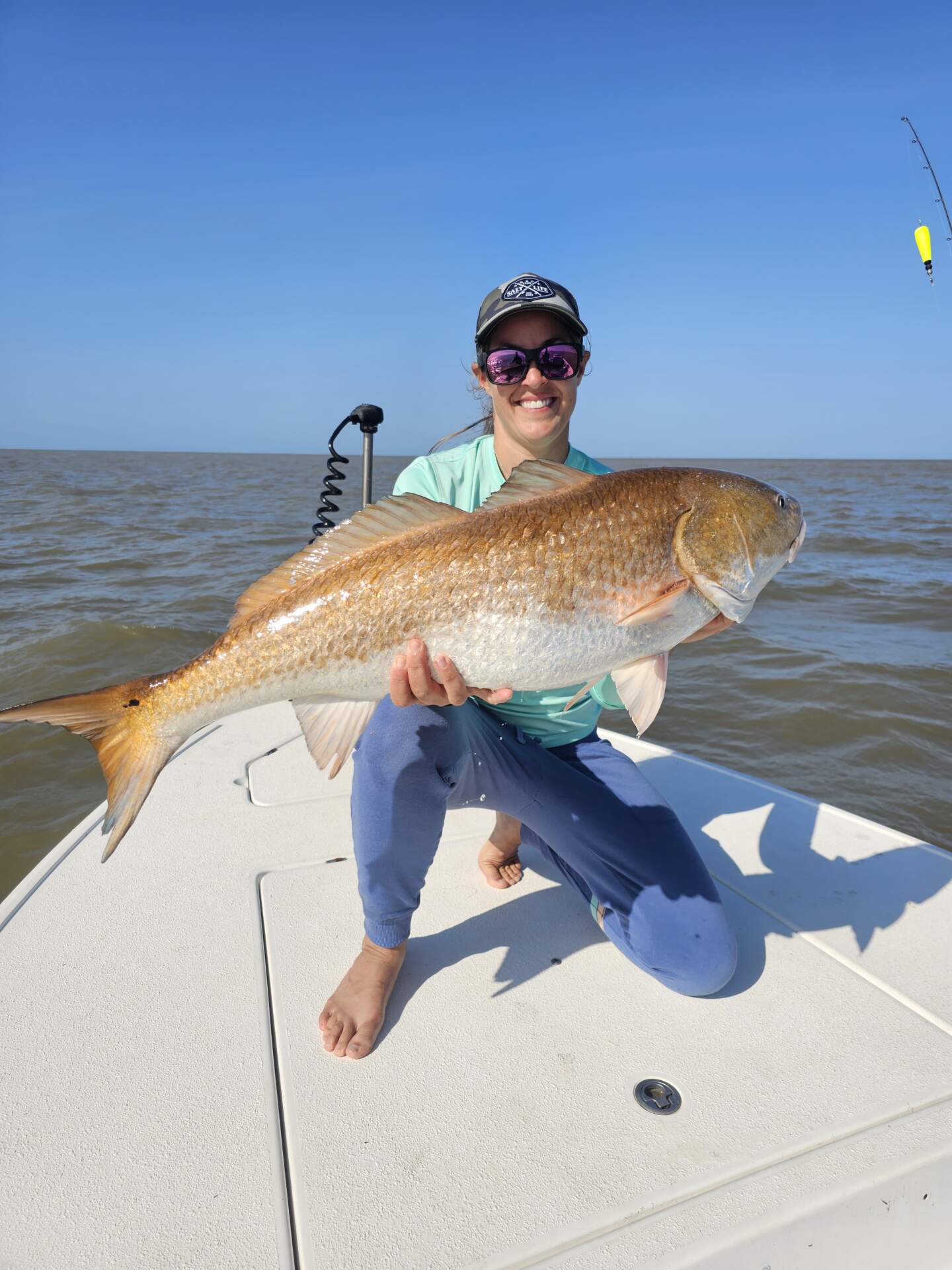Winter in Louisiana might bring cooler weather, but it doesn’t slow down the fishing. If anything, the inshore marshes come alive with big redfish and hungry speckled trout stacking up in predictable spots. While some fishermen pack it in for the season, those who know where to look can have some of the best fishing of the year. The key is understanding how these fish behave in the colder months and adjusting your approach to match their habits.
Finding Redfish in the Winter Marsh
Redfish are built for cold weather. They don’t disappear in the winter, but they do move differently. When temperatures drop, they push into shallow ponds and bayous where the water warms up faster. On sunny days, reds will pile into mud-bottomed flats and stay put, soaking up the heat. These areas hold shrimp, crabs, and baitfish trying to do the same thing, making them prime feeding grounds.
In clear water, you can often see big redfish cruising just under the surface, their bronze backs standing out against the muddy bottom. They’ll be slower than they are in the summer but just as aggressive when they decide to eat. A well-placed cast with a slow-moving bait is all it takes. Soft plastics, slow-sinking twitch baits, and even fresh dead shrimp on the bottom can draw strikes. If the fish seem sluggish, downsizing your bait and slowing your retrieve can make a difference.
Tide movement is still a major factor, but unlike in the summer, winter reds don’t rely on fast-moving water to feed. Instead, they take advantage of slack tides to root around in the mud. On a high tide, they push into marsh drains and creeks. As the water falls, they stage at the mouths of cuts, ambushing anything that gets swept their way.
Speckled Trout in Deep Holes and Cuts
Speckled trout in winter act a little differently than redfish. When the water gets cold, they move to deeper areas where the temperature stays more stable. That means bayous, deep holes, and ledges along main channels. Some of the biggest trout of the year are caught in winter because they aren’t spread out—they’re stacked up, and if you find one, you’ve probably found a pile of them.
Fishing for winter trout requires a little patience. They won’t always chase down a bait like they do in warmer months, so working soft plastics with a slow, steady hop off the bottom is usually the way to go. Suspending hard baits also work well, especially in clear water, where trout will sit just below the surface waiting for an easy meal.
One trick that works well in winter is fishing later in the day. Morning temperatures can make trout sluggish, but as the sun warms the water, they get more active. A midday incoming tide can be a prime window to hook into a limit of solid fish.
Gear Up for Winter Marsh Fishing
- Rods/Reels – Medium-light to medium action
- Tackle – Soft plastics, twitch baits, suspending lures
- Line/Leader – 10-15 lb braid, 20 lb fluorocarbon leader
- Clothing – Layers, waterproof outerwear, gloves
- Sunglasses – Polarized for spotting fish
- Net – Helps land big reds and trout
- Bait – Live shrimp, mullet, or artificials
- Tides/Weather – Check conditions before heading out
- Boat Check – Ensure gear is ready
- Hot Drink – Coffee or soup for the cold mornings
A Season for Big Fish
Winter fishing in Louisiana’s marshes is all about patience and knowing where to look. The fish might not be as spread out as they are in warmer months, but when you find them, you’ll get into some of the best action of the year. Big redfish are still crushing baits in the shallows, and trout are stacking up in deeper holes, ready to eat. With the right approach and a little adjustment to the season, you can put together solid days on the water while everyone else is waiting for spring.

